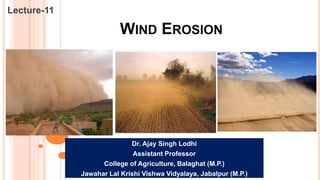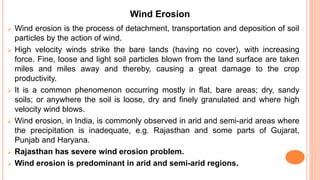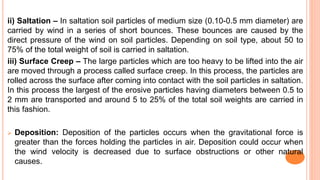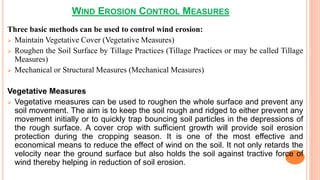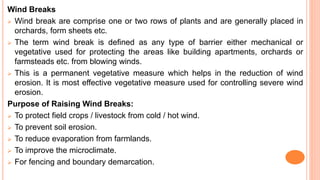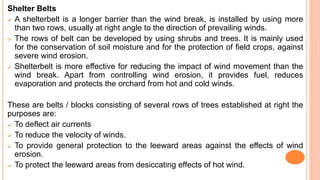The document discusses wind erosion, a process that detaches, transports, and deposits soil particles due to wind action, primarily affecting arid and semi-arid regions like Rajasthan, India. Factors influencing wind erosion include climate, soil characteristics, and vegetation cover, which can mitigate erosion effects through protective measures. Control methods such as maintaining vegetative cover, employing tillage practices, and utilizing mechanical structures like wind breaks and shelter belts are outlined as effective strategies to combat wind erosion.
